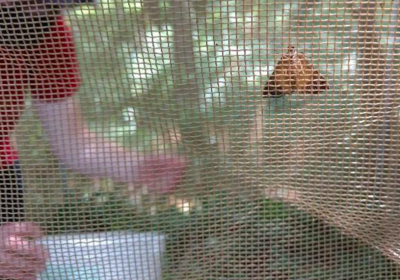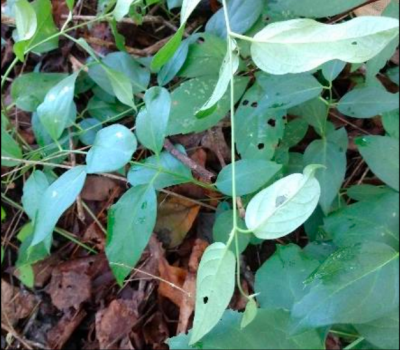Program Leader: Victoria Wallace, Extension Educator

released in an area infested with
swallow-wort.
Photo: Gail Reynolds
Invasive Plants: A Growing Concern
IPM methods can be used to control invasive plants in residential properties, communities, and natural and managed landscapes. The Connecticut Invasive Plant Working Group (CIPWG) is a consortium of members of environmental organizations and affiliates of municipal and state agencies whose mission is to promote awareness of invasive plants and their non-invasive alternatives. CIPWG’s news and events list serve has approximately 1150 members. The CIPWG website provides information on invasive plant identification and management, the Connecticut list of invasive plants, photos, native plant and other non-invasive alternatives, and legislative updates. CIPWG invasive plant talks were presented, invasive plant educational materials were provided, and/or invasive plant management activities occurred at local, statewide, and regional events during 2021. A minimum of 400 invasive plant activities in over 50 Connecticut towns reached over 8,700 Connecticut citizens, including agency and municipal staff. A minimum of 13,406 hours of intensive invasive plant training sessions and management activities was provided, as well as technical educational outreach.

insects is evident on these
swallow-wort plants.
Photo: Gail Reynolds
Invasive Biological Control Projects: Swallow-wort
Victoria Wallace serves as the Principal Investigator for a USDA APHIS biological control project of swallow-wort, a serious invasive weed of meadows, pastures, roadsides, woodland edges and coastal shorelines. Ms. Wallace supervised UConn Master Gardener Coordinator Gail Reynolds, who recruited private landowners to participate in the applied research project. One species of moth (Hypena opulenta) was introduced as a biological control agent onto dense monocultures of swallow-wort in 2020 and 2021. A fact sheet and an infographic for swallowwort biological control are available on the IPM website. The introduction and establishment of biological control agents to reduce populations of swallow-wort in CT provide a sustainable method of managing this invasive pest in open spaces throughout Connecticut.
Connecticut Swallow-wort Biocontrol Project Map 2019-2022